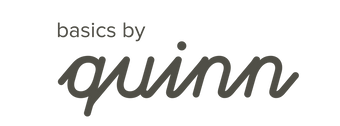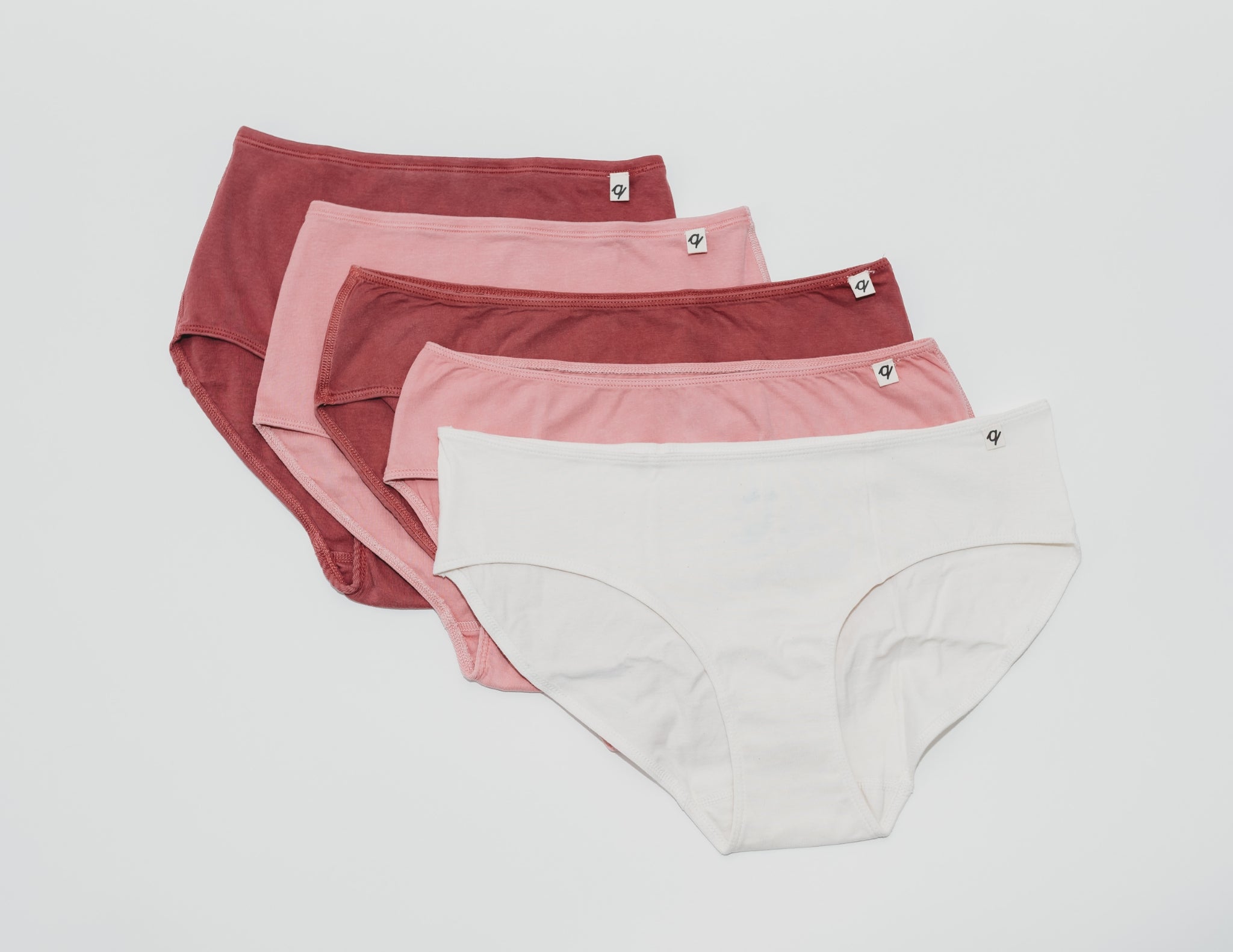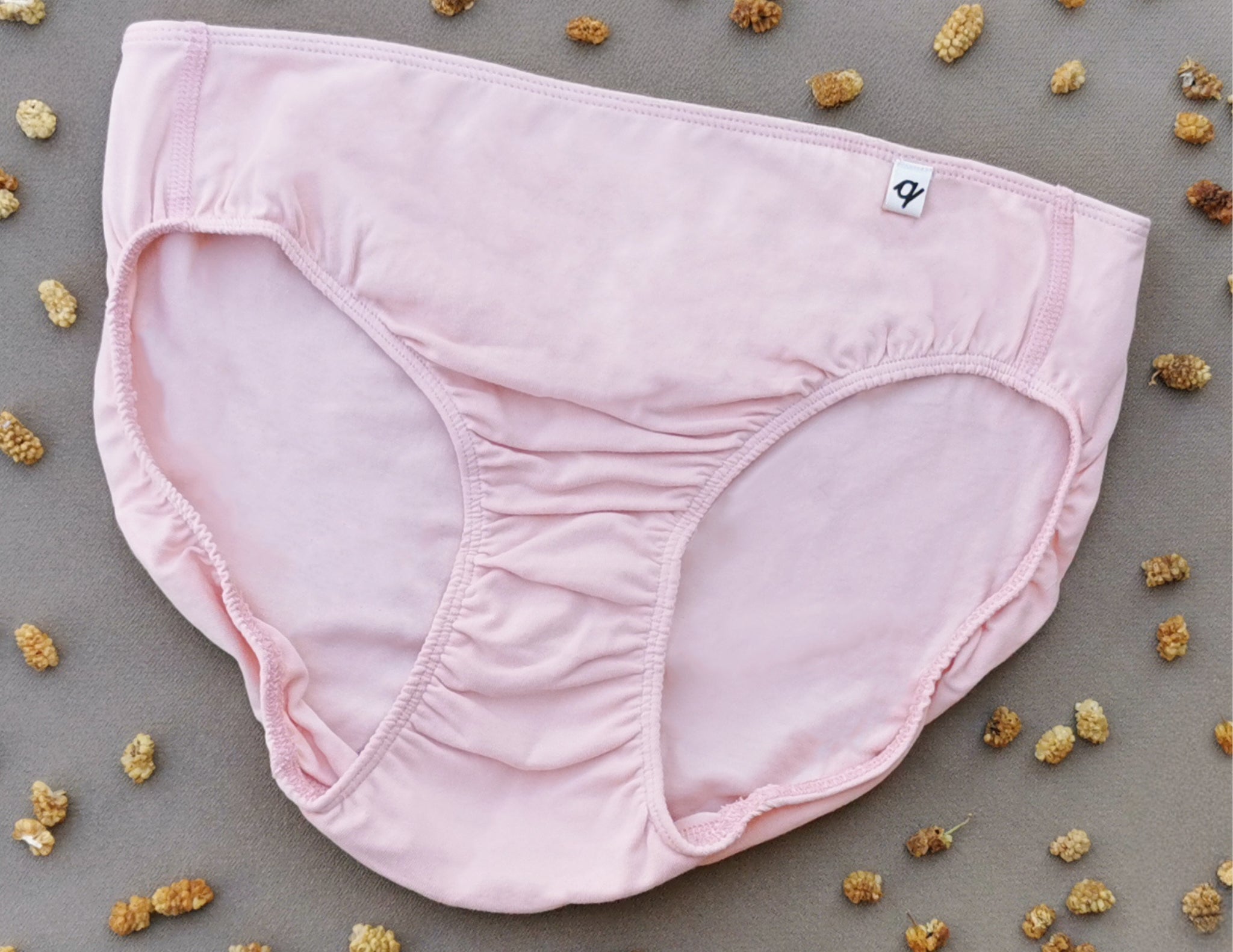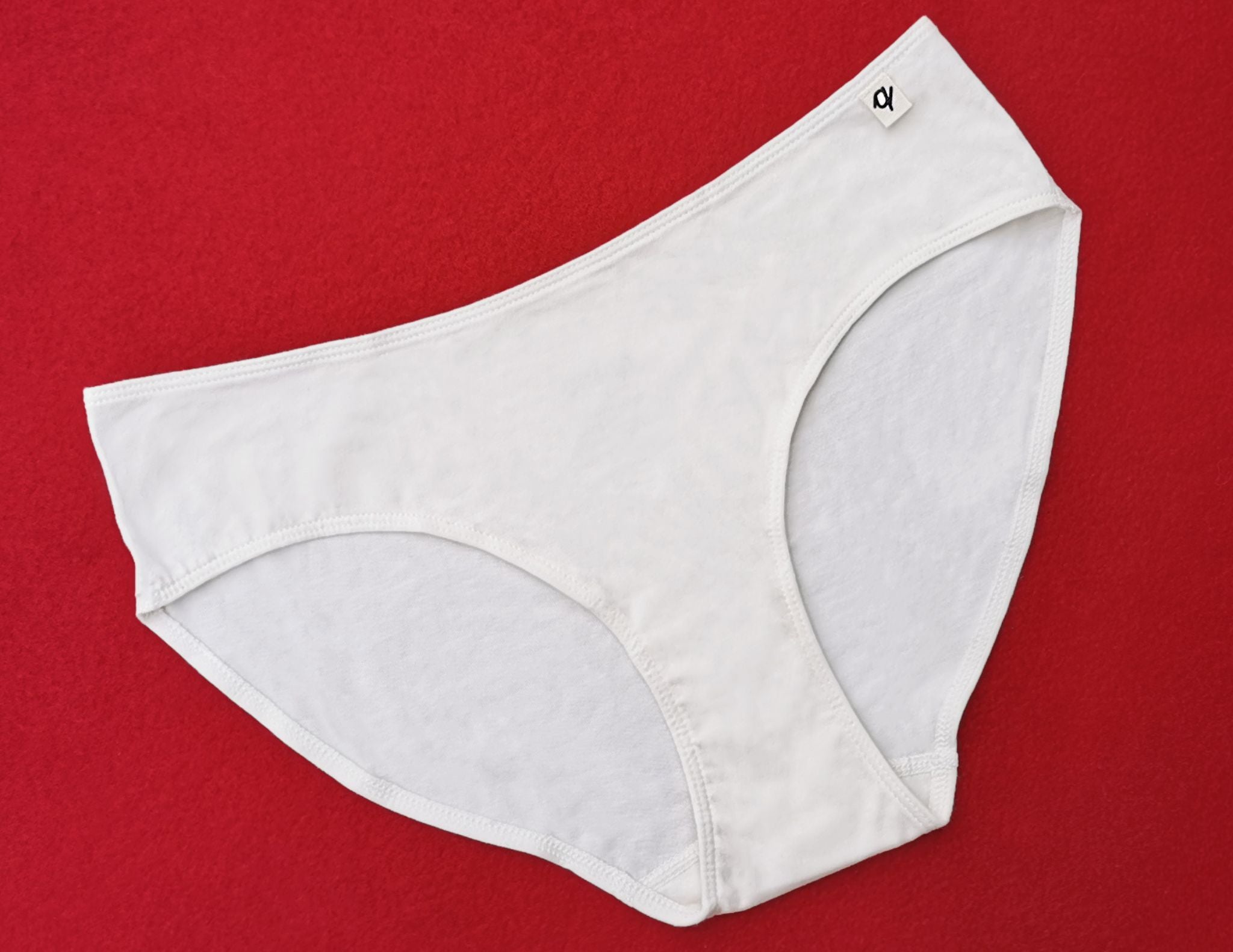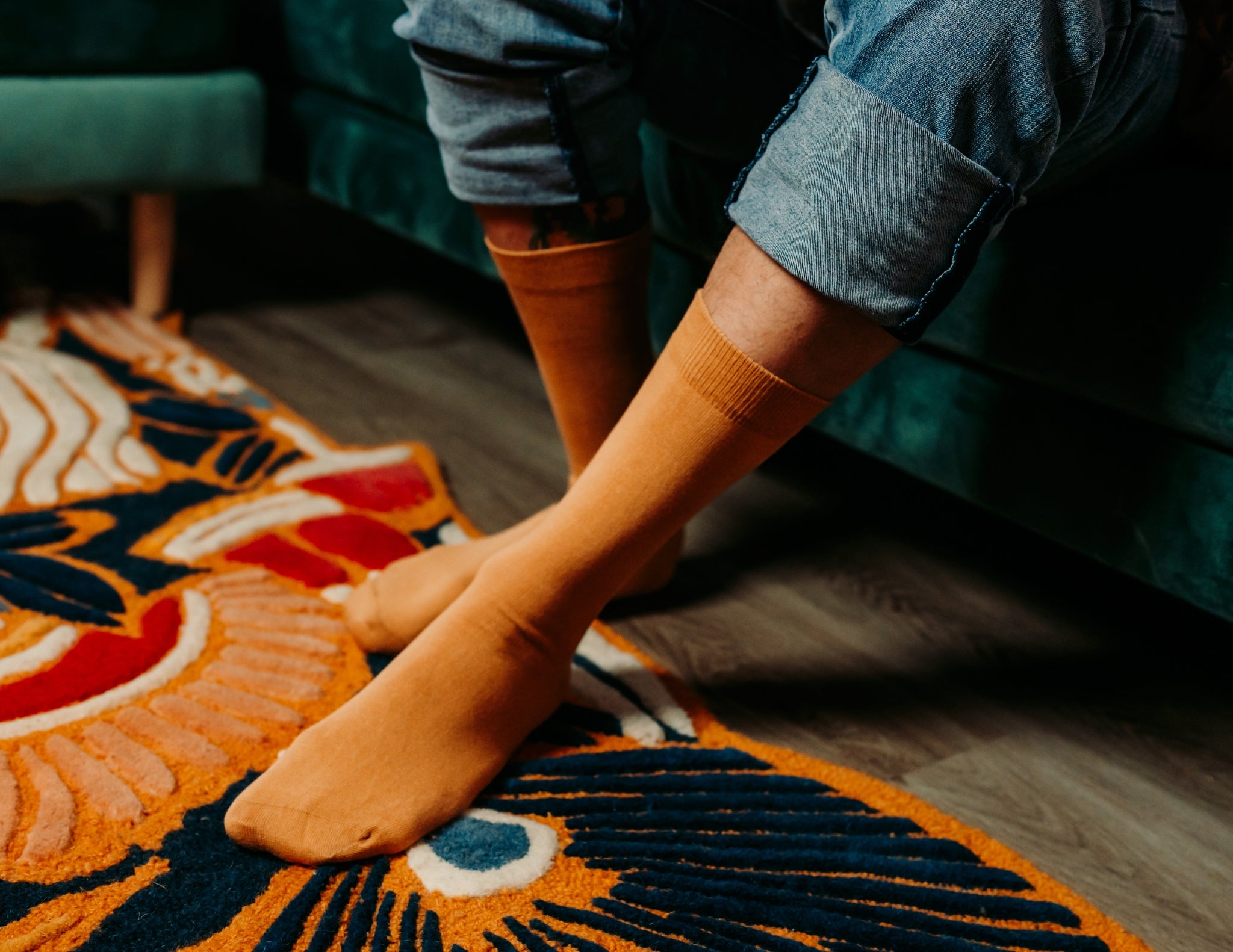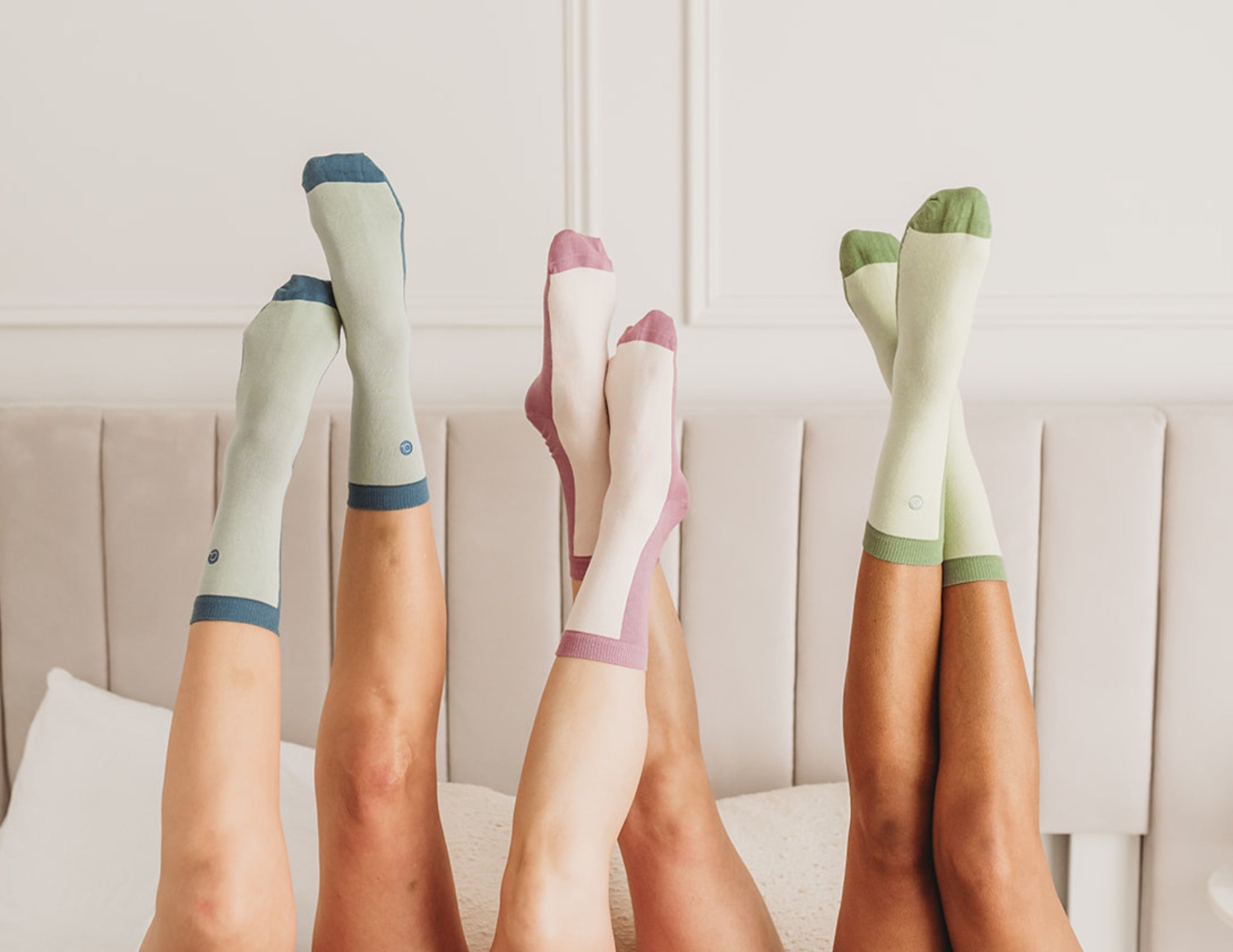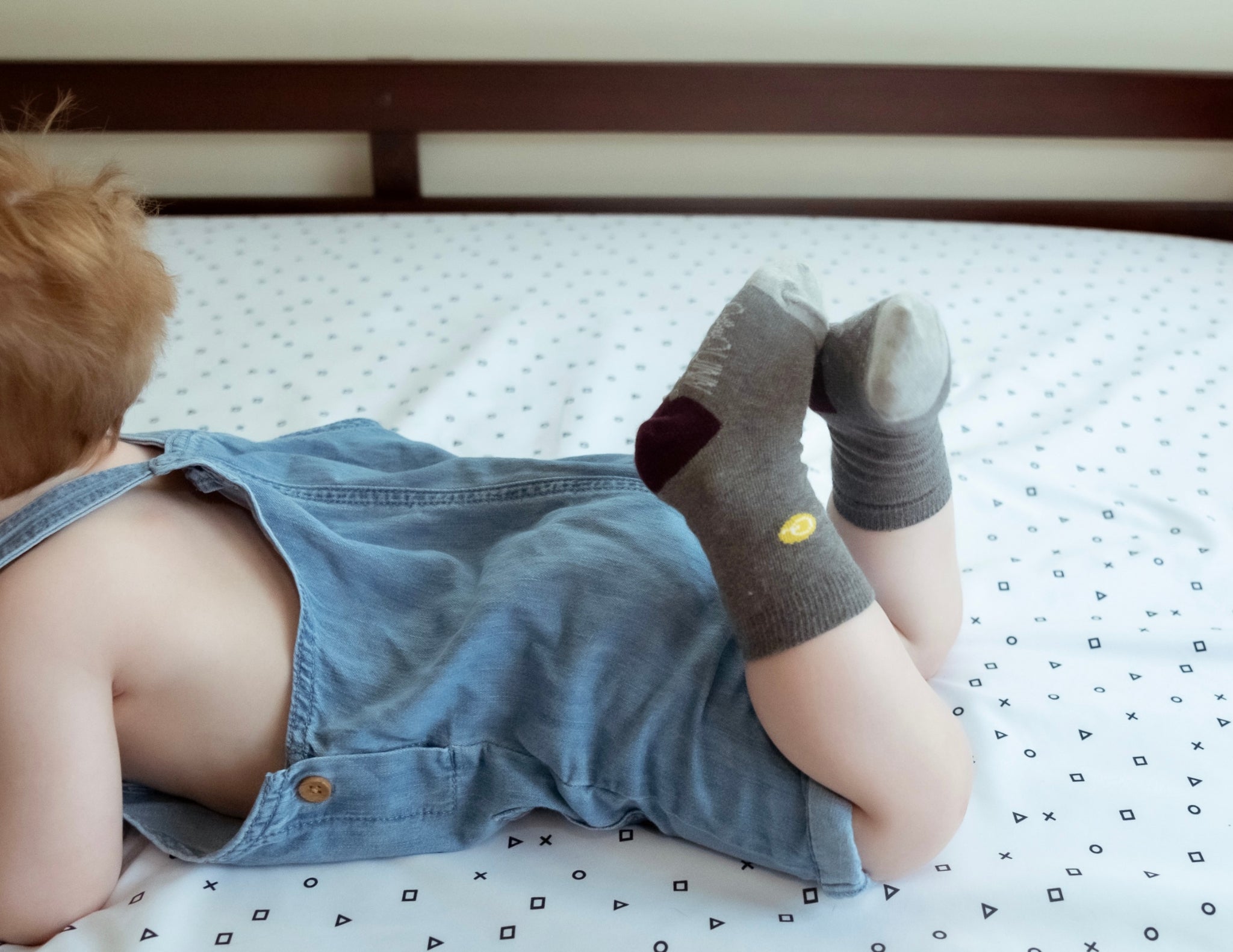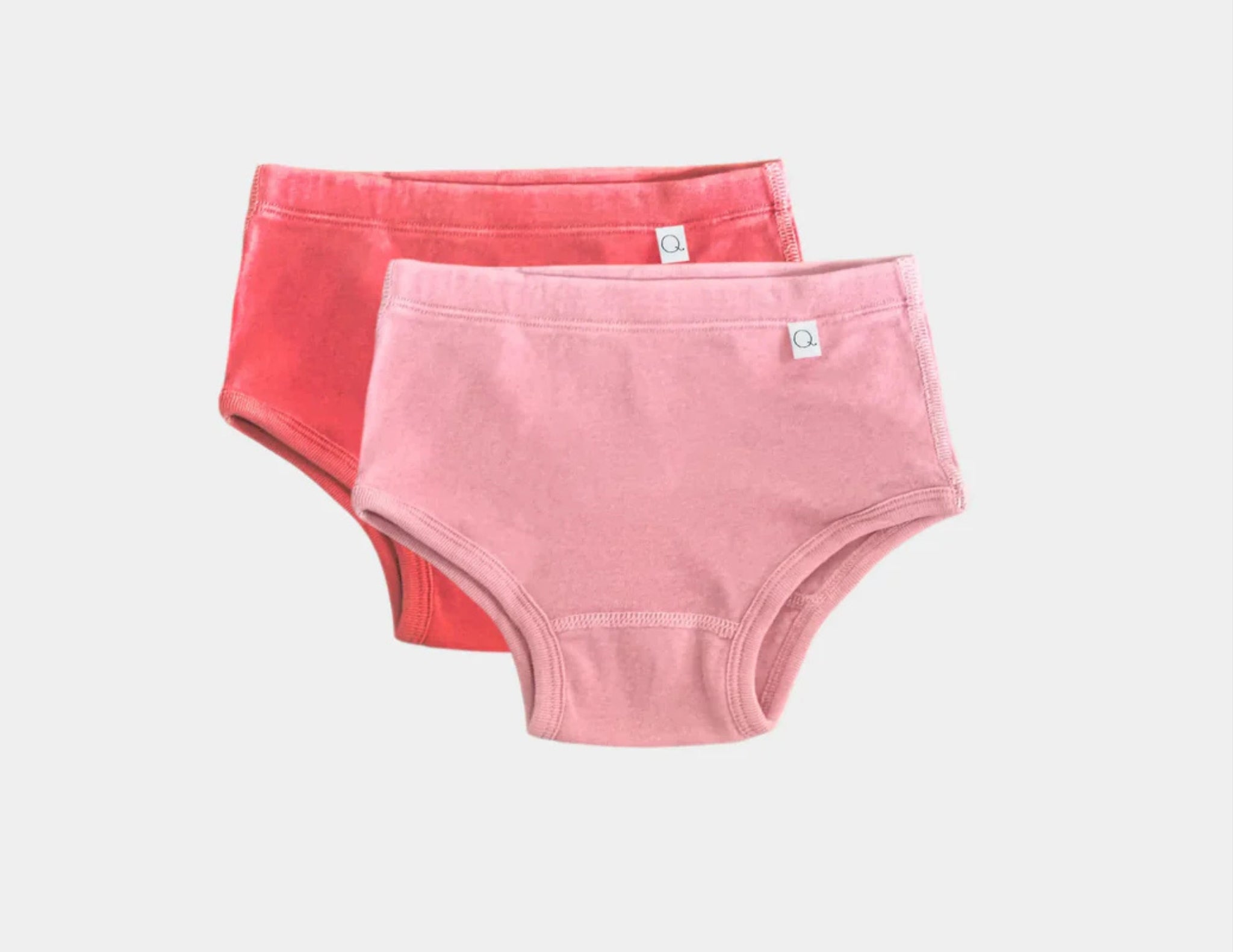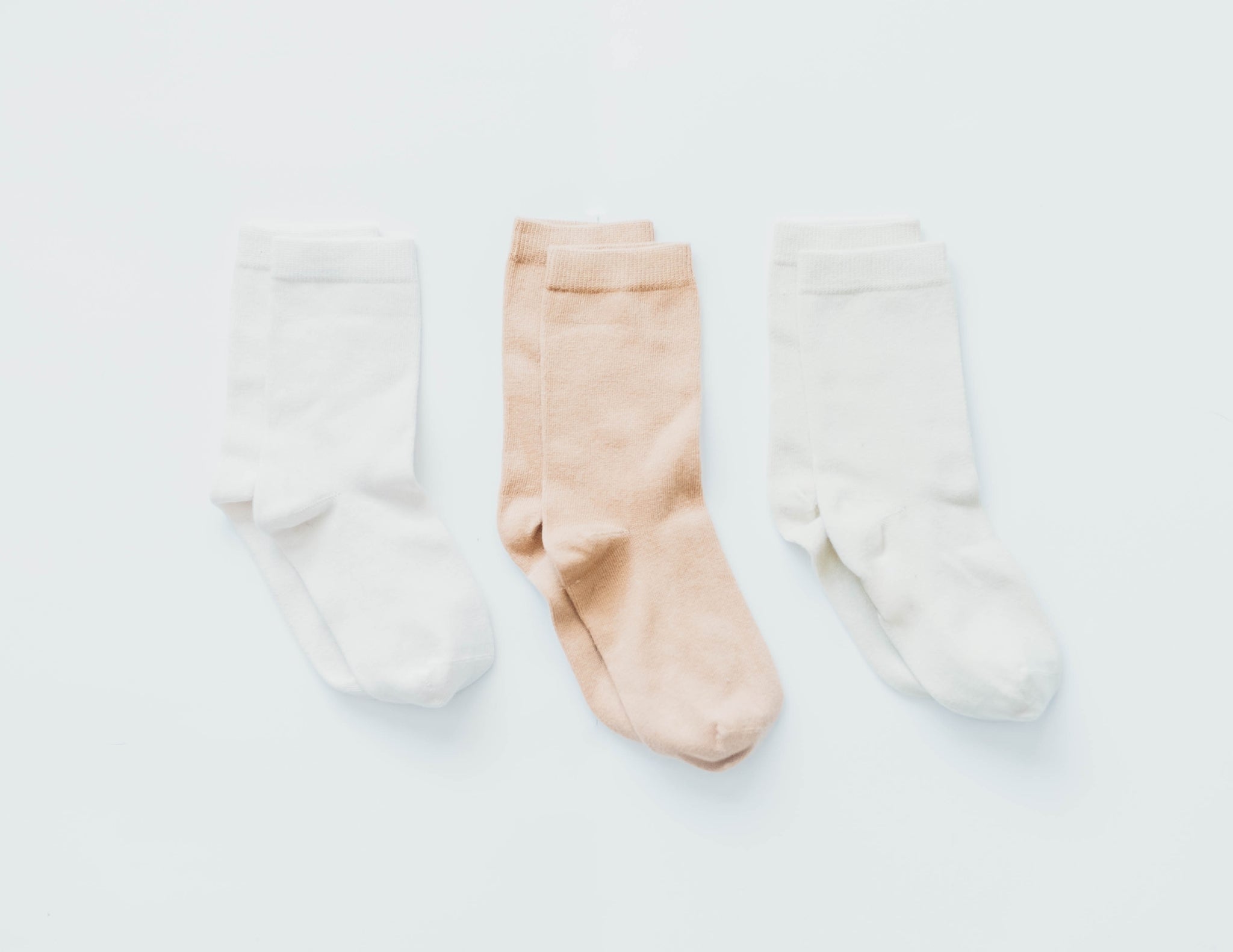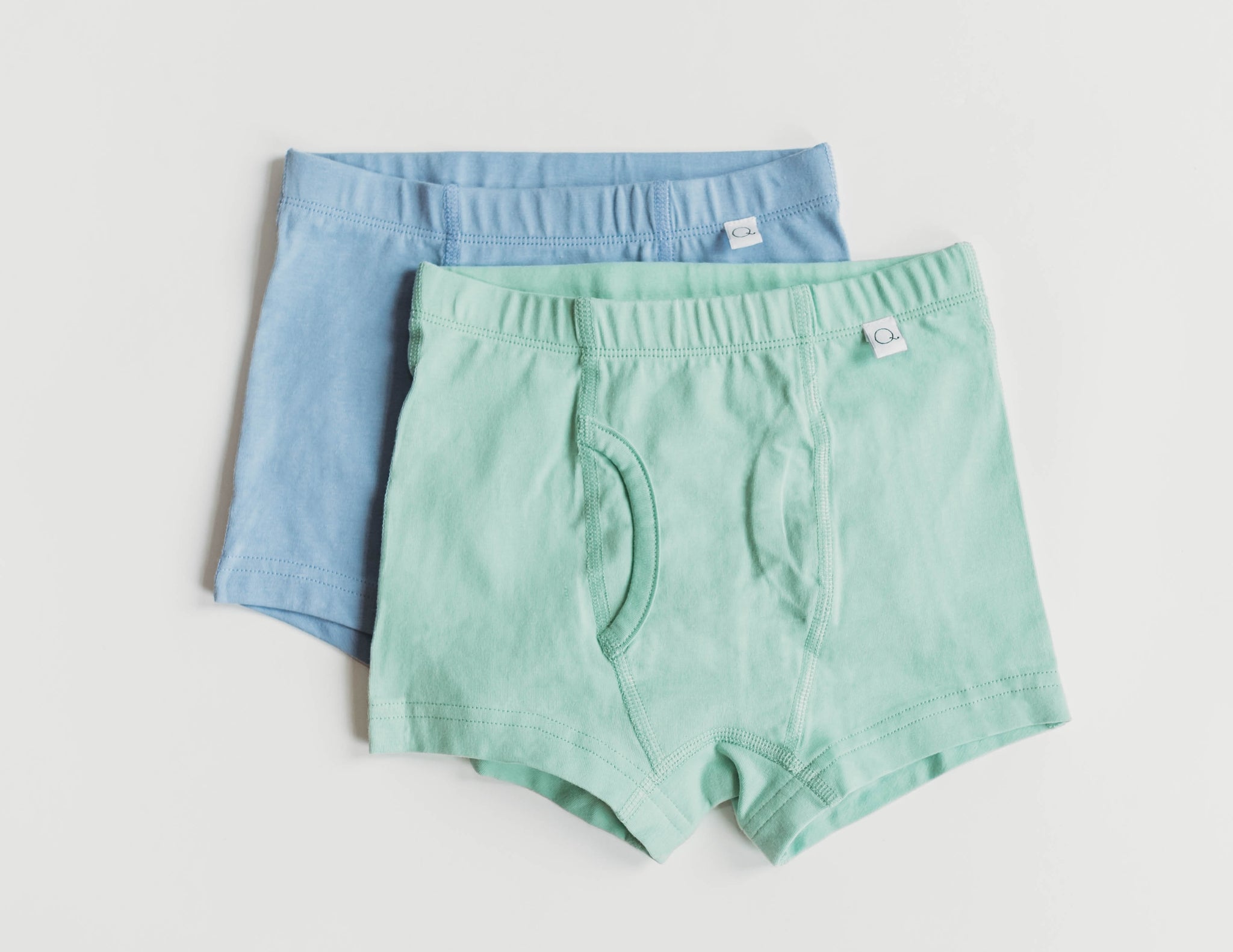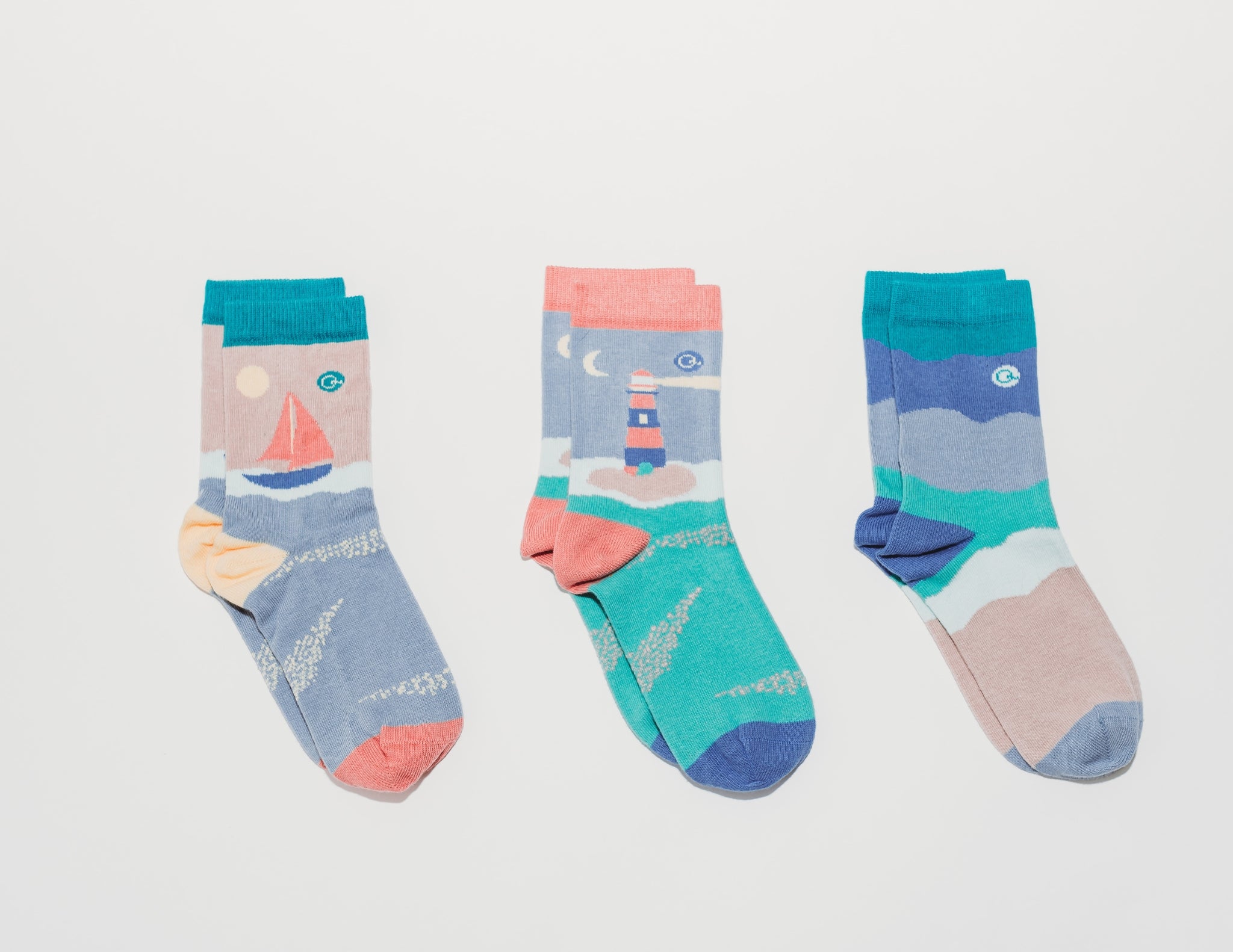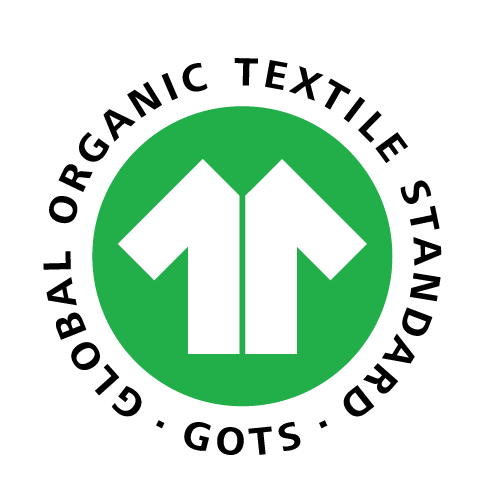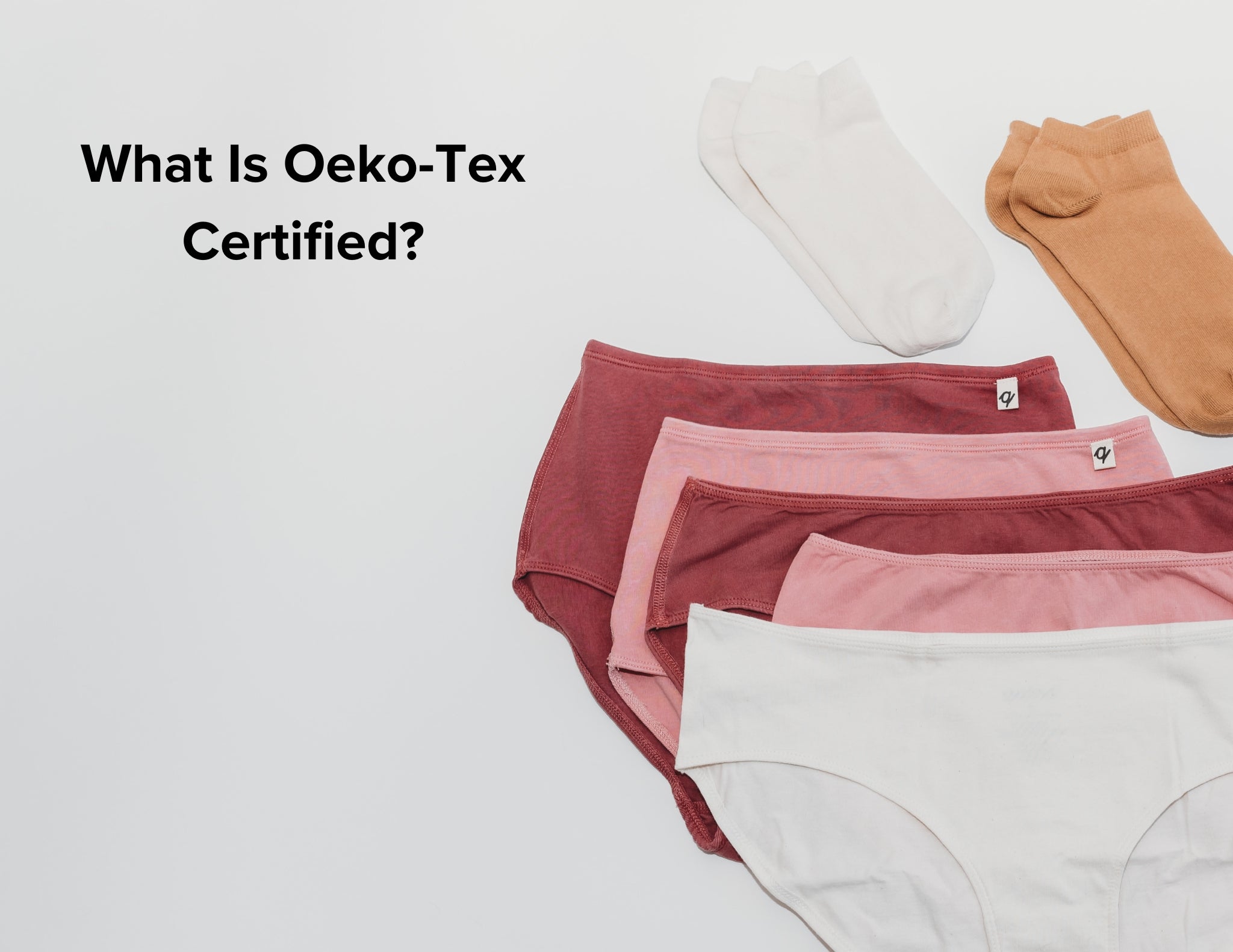
What Is Oeko-Tex Certified? Everything You Need to Know
When shopping for baby clothing, underwear, socks or other textiles, you've likely saw the Oeko-Tex certification label. This globally recognized certification plays a significant role in ensuring textile safety, but what exactly does it mean for the products you bring into your home? Understanding Oeko-Tex certification can help you make more informed choices about the fabrics that come into contact with your skin every day.
What Is Oeko-Tex Certified?
Oeko-Tex certification is an independent testing and certification system for textiles at all stages of production. Established in 1992 by the International Association for Research and Testing in the Field of Textile and Leather Ecology, Oeko-Tex verifies that textile products are free from harmful substances that could pose risks to human health.
The certification process involves laboratory testing for hundreds of potentially harmful chemicals. These include pesticides and herbicides that might remain in natural fibers, heavy metals like lead and mercury that can be used in dyes, formaldehyde often used in wrinkle-resistant treatments, carcinogenic dyes that have been linked to health concerns, phthalates commonly found in prints and coatings, and various allergenic substances that might cause skin reactions.
Products that pass these tests receive certification, giving consumers confidence that what they're purchasing meets strict safety standards. The testing is particularly thorough because it examines every component of a textile product—not just the main fabric, but also threads, buttons, zippers, and any other materials used in construction. This approach secures that no part of the certified product contains substances that exceed the established limits for human safety.
What Are the Different Types of Oeko-Tex Certifications?
Oeko-Tex has evolved to offer several certification standards, each addressing different aspects of textile production and safety. Understanding these differences can help you select products that align with their specific concerns.
- STANDARD 100 by OEKO-TEX® is the most common certification consumers encounter. This standard indicates that every component of a textile product has been tested for harmful substances and found to be harmless to human health. The testing criteria are divided into four product classes based on skin contact and user vulnerability, with Class I being the most stringent for baby products—critical consideration when choosing organic kids' clothing. A garment with this certification has been verified to contain no harmful levels of substances like pesticides, heavy metals, formaldehyde, or azo dyes. For families with young children or individuals with chemical sensitivities, this certification provides valuable peace of mind.
- MADE IN GREEN by OEKO-TEX® goes beyond testing for harmful substances to address broader sustainability concerns. Products with this certification are not only safe for human use but are also manufactured in environmentally friendly facilities with safe and socially responsible working conditions. Each MADE IN GREEN label features a unique product ID that consumers can use to trace the production chain, offering unprecedented transparency about where and how their textiles were made. This certification appeals to consumers who want assurance about both product safety and ethical production practices.
- LEATHER STANDARD by OEKO-TEX® applies specifically to leather products, which present unique testing challenges compared to traditional textiles. This standard make sure that leather items are free from harmful chemicals used in tanning and finishing processes. Given that leather production traditionally involves numerous chemicals, this certification is particularly valuable for consumers purchasing leather clothing, shoes, or accessories that will have prolonged contact with skin.
- DETOX TO ZERO by OEKO-TEX® helps companies eliminate harmful chemicals from their production processes, aligning with Greenpeace's Detox Campaign to prevent water pollution. Rather than certifying end products, this standard focuses on manufacturing facilities and their chemical management systems. Companies that achieve this certification demonstrate their commitment to reducing environmental impact.
- ECO PASSPORT by OEKO-TEX® applies to chemical substances used in textile and leather production, ensuring they meet high environmental and safety standards. This certification is primarily relevant to chemical manufacturers and suppliers within the textile industry, though consumers benefit indirectly when brands source their materials from ECO PASSPORT certified suppliers.
- VERIFIED ORGANIC COTTON certification tests for harmful substances, genetically modified cotton, and pesticides, while ensuring traceability throughout the supply chain. This certification is particularly valuable for consumers seeking organic cotton products that maintain their organic integrity from field to finished product.
Why Is Oeko-Tex Certification Important?
The importance of Oeko-Tex certification extends beyond simple product labeling—it represents a significant advancement in consumer protection and environmental responsibility within the textile industry.
Health protection stands as the primary benefit of Oeko-Tex certification. Our skin, the body's largest organ, absorbs substances it comes into contact with, making the safety of textiles a genuine health concern. The certification ensures textiles don't contain substances that could cause skin irritation, allergic reactions, or more serious health issues through prolonged exposure. For individuals with sensitive skin or conditions like eczema or dermatitis, this certification helps identify products less likely to trigger reactions.
Environmental consideration is another crucial aspect of Oeko-Tex certification. Many harmful textile chemicals eventually make their way into water systems and soil during production, use, and disposal. When we wash textiles containing harmful substances, these chemicals enter wastewater and eventually the broader environment. By limiting harmful substances in certified products, Oeko-Tex helps reduce this environmental impact. The certification's various standards also encourage manufacturers to adopt more sustainable production methods, further reducing the ecological footprint of textile production.
Transparency in the textile industry has historically been limited, with consumers having little information about the chemicals used in their clothing and home textiles. Oeko-Tex certification provides clear information about product safety, helping consumers make informed choices. The certification's tracking system allows consumers to verify the authenticity of certified products and, in some cases, trace their production journey.
Global standards are particularly important in today's international manufacturing landscape. Oeko-Tex applies consistent standards worldwide, meaning a certified product meets the same requirements regardless of where it was manufactured. This consistency is valuable in an industry where production often spans multiple countries with varying regulatory frameworks. For consumers, this means that an Oeko-Tex certified product from any country has undergone the same rigorous testing and meets the same safety criteria.
What Does Oeko-Tex Certified Mean for Consumers?
For consumers navigating the complex world of textile products, Oeko-Tex certification offers several practical benefits that directly impact daily life and well-being.
- Peace of mind comes from knowing that certified products have been thoroughly tested for harmful substances by independent laboratories. In a market flooded with claims about product safety and quality, this third-party verification provides reliable assurance. Consumers can trust that certified products have met specific, scientifically established criteria rather than vague marketing promises. This is especially valuable when purchasing items for vulnerable family members or those with health concerns.
- Skin-friendly products are a significant benefit of Oeko-Tex certification, particularly important for those with sensitive skin, allergies, or conditions like eczema. Textiles come into prolonged contact with our skin, and harmful substances in fabrics can cause irritation, rashes, and discomfort. Certified products have been tested to ensure they don't contain irritants above established safety thresholds. Many consumers report that switching to Oeko-Tex certified underwear for sensitive skin has helped reduce unexplained skin irritations and improved overall comfort. At Q for Quinn, all products—from eczema-friendly socks and natural dye-free socks to organic cotton women's underwear and plant-dyed options—are thoughtfully made to be gentle on sensitive skin and certified safe.
- Baby safety is a paramount concern for parents, making Oeko-Tex certification especially valuable for baby products. Infants have more sensitive skin than adults and are more vulnerable to the effects of harmful chemicals. Their developing systems are less equipped to process toxins, and they often mouth fabrics, creating additional exposure routes. Oeko-Tex certified baby clothing, bedding, and toys provide an extra layer of protection during these crucial developmental stages. The certification's Class I standard, specifically designed for baby items, applies the strictest limits on potential irritants and harmful substances. At Q for Quinn, all baby and kids' essentials—including organic cotton baby socks, natural dye-free kids' socks, and plant-dyed underwear—are created to meet the highest safety standards for sensitive skin. You’ll also find dye-free underwear for kids designed to minimize irritation and maximize comfort.
- Quality assurance often accompanies Oeko-Tex certification, as manufacturers who invest in certification typically maintain higher production standards overall. While the certification specifically addresses chemical safety rather than durability or construction quality, there's often a correlation between brands that prioritize safety certification and those that value quality more broadly. Consumers frequently find that certified products offer better longevity and performance, making them worthwhile investments despite sometimes higher initial costs.
How to Identify Oeko-Tex Certified Products
Finding Oeko-Tex certified products requires some knowledge about what to look for and where to find verification information. The certification is only valuable if consumers can reliably identify certified products.
The Oeko-Tex label is the most direct indicator of certification. Certified products display the Oeko-Tex label, which includes the specific certification type and a unique identification number. The label typically appears on product tags, packaging, or sometimes directly on the product itself. The appearance of the label varies slightly depending on which Oeko-Tex standard the product has met. For example, STANDARD 100 certification features the words "CONFIDENCE IN TEXTILES" above the Oeko-Tex logo, while MADE IN GREEN certification includes a QR code for traceability information.
Online verification provides an additional layer of assurance. Consumers can verify the authenticity of certification by entering the identification number found on the label into the verification tool on the Oeko-Tex website. This step is particularly valuable when purchasing premium products or items where certification significantly influenced the buying decision. The verification will confirm whether the certification is current and which specific standard the product meets.
Product descriptions, especially when shopping online, typically mention Oeko-Tex certification if a product has received it. Manufacturers and retailers recognize the value consumers place on this certification and usually highlight it in marketing materials. When browsing online stores, you can often search specifically for "Oeko-Tex certified" products or filter results to show only certified items. This certification information is typically found in the product details section, alongside other specifications like material composition and care instructions.
Does "Oeko-Tex Certified" Also Mean Organic?
A common misconception among consumers is that Oeko-Tex certification indicates organic status. This misunderstanding is worth clarifying to help shoppers make choices aligned with their values and needs.
The fundamental difference between Oeko-Tex and organic certifications lies in their focus. Oeko-Tex certification focuses on the absence of harmful substances in the final product, regardless of how the raw materials were grown or processed. A conventionally grown cotton product treated with synthetic chemicals during production could still receive Oeko-Tex certification if the final product tests within safe limits for harmful substances. The certification ensures the end product is safe for human use but doesn't address the agricultural methods used to produce the raw materials — unlike the distinction between organic cotton and regular cotton, which is rooted in how the cotton is grown and processed from the start.
Organic certifications, by contrast, primarily concern how fibers were grown—without synthetic pesticides, fertilizers, or genetically modified organisms. Organic standards focus on the agricultural phase and often include some processing restrictions, but they don't necessarily test the final product for all potentially harmful substances that might be introduced during manufacturing. A product can be organically grown but still contain problematic substances from dyes, finishes, or other treatments applied during production.
Explore our expert insights on the health benefits of organic cotton underwear, how it compares to other materials, and why it's considered a healthier choice.
GOTS vs. Oeko-Tex: What's the Difference?
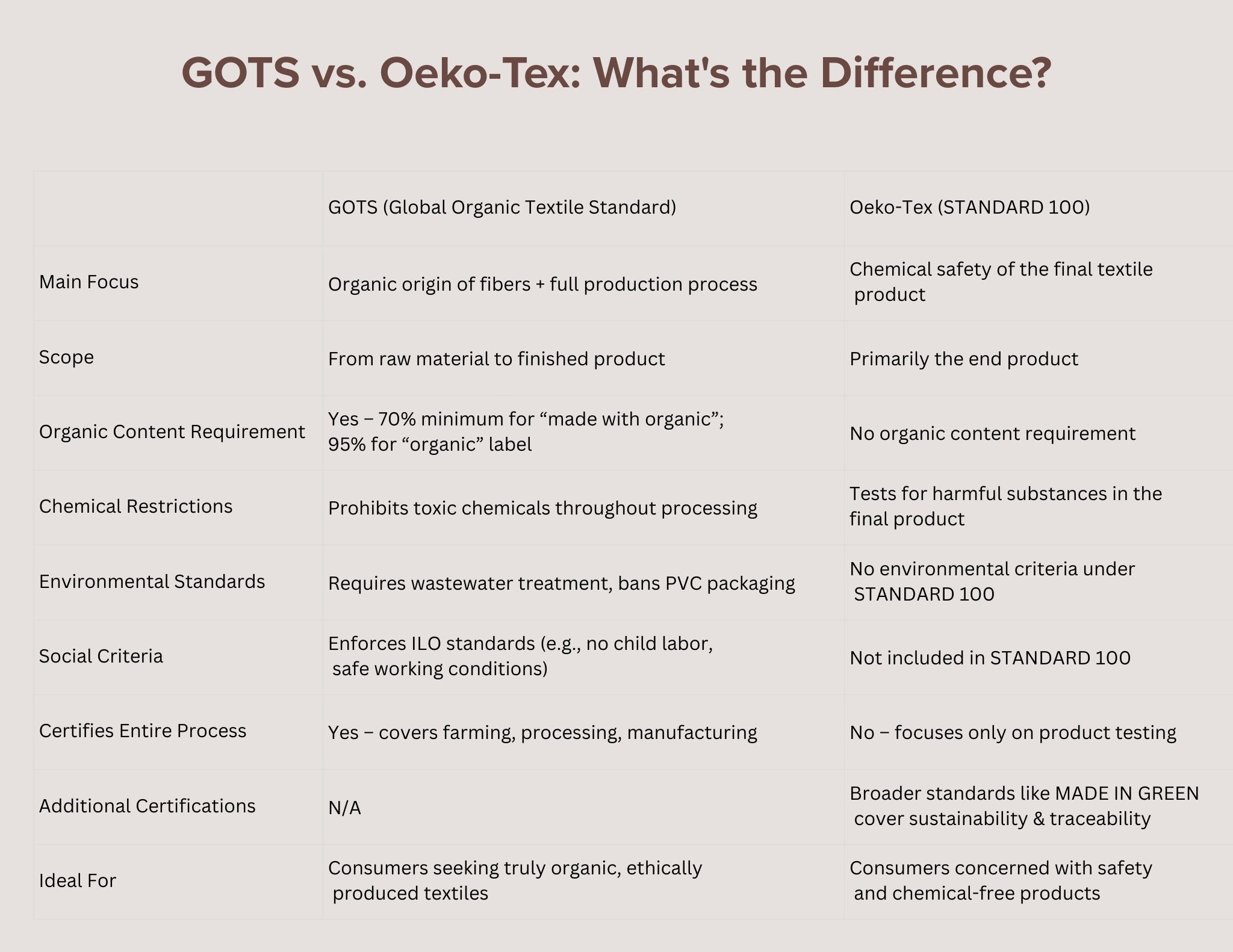
GOTS (Global Organic Textile Standard) and Oeko-Tex are two of the most recognized textile certifications, but they serve different purposes and have distinct criteria. Understanding these differences helps consumers select products that best match their priorities.
The focus areas of these certifications reflect their different origins and purposes. GOTS certifies that textiles are made from organically grown fibers and meet environmental and social criteria throughout production. It was developed specifically to define worldwide recognized requirements for organic textiles. GOTS certification covers the entire production process from field to finished product, ensuring organic integrity at every stage. Oeko-Tex, meanwhile, primarily ensures the final product is free from harmful substances.
Production requirements differ significantly. GOTS prohibits many chemical inputs like formaldehyde, toxic heavy metals, and aromatic solvents throughout processing. It also includes social criteria based on International Labour Organization (ILO) key norms, such as prohibiting child labor and requiring safe working conditions. Oeko-Tex’s STANDARD 100 focuses more narrowly on the chemical safety of the end product. Broader environmental and social criteria are only included under other Oeko-Tex certifications, such as MADE IN GREEN.
Environmental standards vary as well. GOTS requires wastewater treatment in processing facilities and prohibits packaging materials like PVC. Oeko-Tex’s STANDARD 100 doesn’t address environmental impact during manufacturing, although other Oeko-Tex certifications do.
Organic content requirements represent another key difference. GOTS requires a minimum of 70% organic fibers for the “made with organic” label and 95% for the “organic” label. Oeko-Tex has no organic content requirements.
At Q for Quinn, all our products are both GOTS and OEKO-TEX® certified, showing our commitment to safety, sustainability, and organic materials. This dual certification provides assurance about both the agricultural origins of the fibers and the chemical safety of the final product.
The Importance of Fabric Certifications for Underwear and Baby Clothing
Fabric certifications take on heightened importance for items that come into direct and prolonged contact with sensitive skin, making them particularly important for underwear and baby clothing.
Underwear presents unique considerations that make certification especially valuable. These garments sit against your most sensitive skin all day long, creating extended exposure to any substances present in the fabric. The intimate areas covered by underwear often have thinner, more permeable skin that may absorb substances more readily than other body parts. Additionally, these areas tend to be warmer and sometimes moister, potentially increasing the migration of chemicals from fabric to skin. Certified fabrics help prevent irritation, allergic reactions, and potential long-term exposure to harmful chemicals. For those with sensitive skin conditions, certified underwear can significantly improve comfort and reduce unexplained irritation or reactions.
The genital area is particularly vulnerable to irritation from textile chemicals, and many dermatologists recommend certified organic or Oeko-Tex certified underwear for patients with unexplained irritation or sensitivity. The warm, moist environment created in these areas can potentially accelerate the release of chemicals from fabrics, making chemical safety even more important for these garments than for outer clothing. Furthermore, synthetic dyes and finishes commonly used in conventional underwear production have been linked to irritation and allergic reactions in sensitive individuals. Certification helps identify products less likely to cause these issues.
Baby clothing needs present even more compelling reasons for certification. Infants have thinner, more permeable skin that absorbs substances more readily than adult skin—up to 65% more in some cases. Their skin barrier function is not fully developed, making them more vulnerable to irritants and allergens. Babies also have developing immune and detoxification systems that are less equipped to process potentially harmful substances. Their higher surface-area-to-body-weight ratio means they receive proportionally higher exposure to any chemicals present in their clothing and bedding.
The behavior of infants further increases their exposure to textile chemicals. Babies often mouth their clothing, making oral exposure to textile chemicals a concern beyond skin contact. They also have more frequent skin-to-fabric contact due to limited mobility and spend more time lying against bedding and wearing sleepwear. Their higher respiratory rates may increase inhalation of any volatile compounds released from fabrics. All these factors combine to make certified textiles particularly important for this vulnerable population.
Parents often report that switching to certified baby clothing reduces unexplained rashes, irritation, and sleep disturbances in infants with sensitive skin. Pediatricians and dermatologists frequently recommend certified textiles for babies with eczema, dermatitis, or unexplained skin reactions. The peace of mind that comes from knowing baby clothing has been tested for harmful substances is invaluable for many parents navigating the challenges of caring for a newborn.
Common Questions About OEKO-TEX
What is OEKO-TEX material made from?
OEKO-TEX isn't a specific material or fabric type—it's a certification that can apply to textiles made from virtually any fiber. This is a common misconception worth clarifying. OEKO-TEX certified products can be made from natural fibers like cotton, wool, silk, or linen; synthetic fibers like polyester, nylon, or acrylic; or blends of various fibers.
The certification doesn't dictate what materials must be used; rather, it verifies that whatever materials are present in the final product have been tested and found to be free from harmful levels of restricted substances. You can find OEKO-TEX certification on everything from 100% organic cotton baby clothes to synthetic performance fabrics, from silk bedding to polyester backpacks.
What makes a textile "OEKO-TEX material" is not its fiber composition but the fact that it has undergone testing and certification to ensure it's safe for human use. This testing examines all components of the product, including main fabrics, linings, threads, buttons, zippers, and any other materials used in construction.
How long does it take to get a OEKO-TEX® certification?
The OEKO-TEX certification process typically takes between 4-6 weeks from application to certification, though timing can vary based on several factors. The process begins when a manufacturer submits an application and product samples to an authorized OEKO-TEX institute for testing.
The timeline depends on several variables:
- The complexity of the product (more components require more testing)
- The type of certification being sought (STANDARD 100 vs. MADE IN GREEN, etc.)
- Whether the manufacturer has previously been certified
- The current testing volume at the certification institute
- Whether any initial test results require product modifications and retesting
For manufacturers seeking recertification, the process is often faster since they're already familiar with requirements. First-time applicants may need more time to ensure their products and processes meet all standards before submitting for testing.
Once certification is granted, it remains valid for one year. Manufacturers must apply for renewal annually, which includes new testing to ensure continued compliance. This ongoing verification ensures that certified products maintain their safety standards over time, even if production processes or suppliers change.
What are the differences between OEKO-TEX® ORGANIC COTTON and OEKO-TEX® ORGANIC COTTON blended & OEKO-TEX® STANDARD 100?
The key differences lie in material composition and certification scope. STANDARD 100 addresses only chemical safety regardless of materials. ORGANIC COTTON certification addresses both growing methods and chemical safety in a 100% cotton product. ORGANIC COTTON blended addresses chemical safety in a mixed-fiber product that contains some organic cotton.
For consumers seeking products with the lowest environmental impact and highest organic content, OEKO-TEX ORGANIC COTTON provides the strongest assurance. Those primarily concerned with chemical safety regardless of material composition can look for any of these certifications, as they all include STANDARD 100 testing.
Does OEKO-TEX mean no chemicals?
OEKO-TEX certification doesn't mean a product is completely chemical-free—this would be virtually impossible for any manufactured textile. Rather, it means the product has been tested and found to be free from harmful levels of specific restricted substances.
Modern textile production inevitably involves chemicals at various stages—from growing or producing fibers, to spinning, weaving, dyeing, printing, and finishing. Even natural fibers like cotton and wool require processing with some chemicals to become usable fabrics. What matters for human health is which chemicals are used and whether they remain in the final product at levels that could cause harm.
OEKO-TEX certification establishes limits for hundreds of substances known to be harmful to human health, including:
- Regulated substances like certain azo dyes, nickel, lead, and pesticides
- Legally banned substances like carcinogenic dyes
- Chemicals known to cause allergies or irritation
- Substances that aren't legally regulated but are known to be potentially harmful
How to verify OEKO-TEX?
The most reliable verification method uses the unique certification number found on every OEKO-TEX label. This number typically appears directly on the product tag or packaging and follows a specific format (e.g., "OEKO-TEX 12345678 INSTITUTE"). To verify certification:
- Visit the official OEKO-TEX website (www.oeko-tex.com)
- Navigate to the "Label Check" or "Verification" section
- Enter the certification number from your product
- The system will display whether the certification is valid, which company holds it, and what specific standard it meets
For MADE IN GREEN certification, products include a QR code or product ID that provides even more detailed information about where and how the product was manufactured. Scanning this code with a smartphone reveals the product's "supply chain story," including which facilities were involved in production.
What are OEKO-TEX fabrics?
There aren't a specific type of fabric but rather any fabrics that meet the certification standards." OEKO-TEX fabrics" refers to any textiles that have received OEKO-TEX certification, confirming they've been tested and found free from harmful levels of restricted substances. These aren't a specific type of fabric but rather any fabrics that meet the certification standards.

